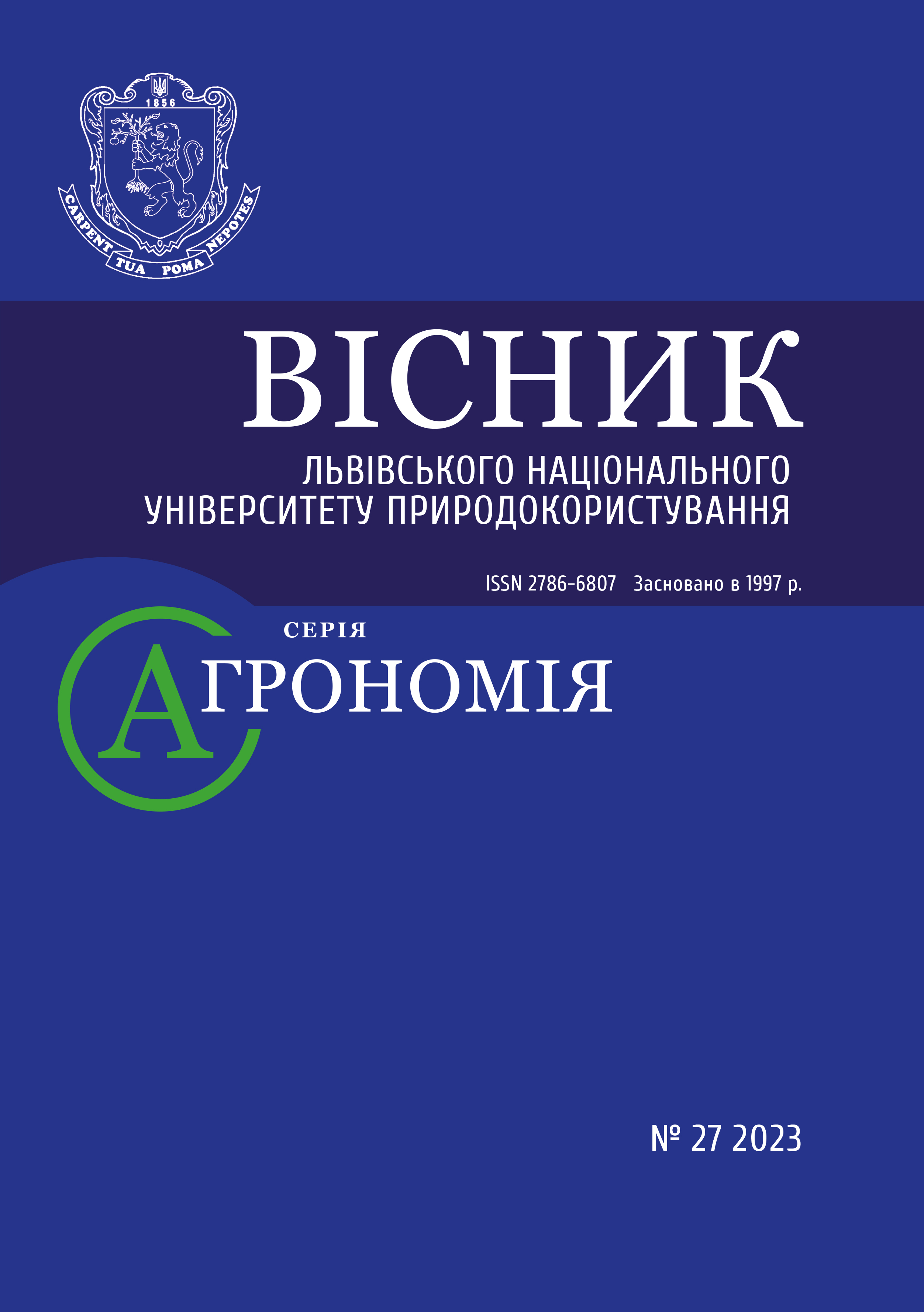CONTENT OF HEAVY METALS IN THE PHYTOMASS OF THE NATURAL MEADOWECOSYSTEMS OF VINNYTSIA REGION UNDER GENERAL BACKGROUND POLLUTION AND AS A RESULT OF ANTHROPOGENIC TRANSFORMATION OF LAND
DOI:
https://doi.org/10.31734/agronomy2023.27.032Keywords:
natural meadows, phytomass, soil, lead, cadmium, zinc, copper, accumulation coefficient, hazard coefficient, fertilisers, soil cultivationAbstract
Meadows as plant ecosystems of the Forest-Steppe zone are secondary in origin. They were formed on the site of indigenous (primary) vegetation types – forest or marsh ecosystems – after being transformed by humans to meet the needs of agriculture or livestock. In ancient times, the areas that are now occupied by meadows were mostly covered by forests or swamps. With population growth and livestock development, these forests were cut down, swamps drained, and the land was used for agricultural production as pastures and hayfields. Meadows on the plains of former forest or marsh ecosystems are unstable dynamic phytocoenoses in different stages of succession. Therefore, dominant species' botanical composition and projective cover change rapidly, requiring constant human intervention to maintain their high productivity.
Following the principles of sustainable development, one of the most urgent tasks is to provide the population with a sufficient amount of high-quality and safe food of both plant and animal origin. It is known that the quality and safety of food products are directly dependent on the environmental conditions of food raw material production. Vegetation of natural fodder lands is an important element of livestock production, which is characterized by low cost compared to cultivated lands.
However, in some areas, natural fodder lands undergo a strong anthropogenic load in technogenesis, leading to soil contamination with various toxicants, particularly heavy metals such as Pb, Cd, Zn, and Cu. The main sources of pollution of natural fodder lands are industry, motor vehicles, chemicalisation of the crop production sector, and others. Under such conditions, the use of phytocoenoses as feedstock for both domestic and wild animals increases the risk of heavy metals entering their bodies, which threatens the production of safe and high-quality products, and contaminated soils may be withdrawn from agricultural use.
The study aimed to determine the levels of accumulation of Pb, Cd, Zn, and Cu in the ecosystems of natural fodderlands under different anthropogenic loads in the conditions of Eastern Podillia in Vinnytsia region.
References
Alieksieiev O. Ecological aspects of land market functioning. Agriculture and forestry. 2019. 4 (15). P. 203–213. DOI: 10.37128/2707-5826-2019-4-17.
Kvitko G. P., Tkachuk O. P., Hetman N. Perennial legumes – the basis of natural intensification of fodder production and improvement of soil fertility in the Forest-Steppe of Ukraine. Fodder and fodder production. 2012. Issue 73. P. 113–117.
Mazur V. A., Vradii O. I. Monitoring of soil contamination with heavy metals at the research site in the Research and Development Group “Agronomic” of Vinnytsia National Agrarian University. Agriculture and Forestry. 2019. 2 (13). P. 16–24. DOI: 10.37128/2707-5826-2019-2-2.
Mudrak H. V., Vdovenko I. P. Analysis of scientific and methodological principles of assessing the suitability of lands of special raw material zones for environmental requirements. Agriculture and forestry. 2017. No 6. P. 129–140.
Optimisation of natural fodder lands of the Forest-Steppe of Ukraine. Scientific Bulletin of NAU. 2005. Issue 87. P. 207–212.
Razanov S. F., Tkachuk O. P. Intensity of soil pollution during the cultivation of leguminous perennial grasses. Agricultural production of Polissya. 2017. Issue 10. P. 53–55.
Samokhval T. P. Fodder productivity and agroecological value of the eastern goat's fescue in the conditions of the Right-Bank Forest-Steppe of Ukraine. Bulletin of Agrarian Science. 2013. No 9. P. 114–117.
Titarenko O. M. Accumulation of heavy metals in the phytomass of natural fodder lands of Eastern Podillia: PhD thesis for the degree of Candidate of Agricultural Sciences: specialty 03.00.16 «Ecology». Titarenko O. M. Lviv. 2021. 21 p.
Titarenko O. M. Ecological and phytocoenotic assessment of natural fodder lands under conditions of technogenic load of the Right-Bank Forest-Steppe: a monograph. Vinnytsia: TOVORY, 2021. 194 p.
Titarenko O., Ibatullin I., Nedashkivskyi V., Nedashkivska N., Stepanchenko V. Accumulation of Zn and Cu by cereal and leguminous vegetation under agrochemical improvement of natural fodder lands of the Right Bank Forest Steppe of Ukraine. International Journal of Ecosystems and Ecology Science (IJEES). 2022. Vol. 12 (4). P. 245–250.
Yakubenko B. E., Stetsenko V. S., Melnychuk M. D. Structure and productivity of natural and anthropogenic phytocoenoses of the Forest-Steppe of Ukraine. Agrarian science and education. 2002. No 3–4. P. 9–14.


